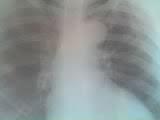


Authors:
Mateus Kambale Sahani1, P. N. Kikuhe2, M.M. Mutumwa3
Affiliation(s):
1AGIR ENSEMBLE, NGO, Health Department, GOMA, Congo, the Democratic Republic of the, 2 Kahembe Health Center,
GOMA, Congo, the Democratic Republic of the, 3 HIV Infection management, Centre Hospitalier de Mugunga, GOMA,
Congo, the Democratic Republic of the,
1. Background
Knowing that Tobacco is a big health issue, our study aimed to analyze the impact of tobacco in people living with HIV
(PLWH),degree of ARV side effects for smokers and non smokers, the relevance of literacy on tobacco as health
problem on the attitude of PLWH regarding tobacco use. Hypothesis: among PLWH, smokers have more health
problems than non smokers; they have low immunity defense than non smokers, PLWH can quit rapidly smoking if
well informed that smoking is more dangerous for them than others.
2. Methods
Retrospective and prospective study realized at GOMA/DRC. Target: PLWH. Retrospective: data collection was done
from files of sicks registered in the program of 2 sites of screening and treatment of HIV. Each site has 650 people
registered. Sample: 200 PLWH constituted by aleatory (random) method taking 2 people among 13 with interval of 6
after the first choice. Prospective: to determine the attitude of PLWH regarding tobacco: the information they have
on the bad effect of tobacco and their commitment to quit when informed. Results were tested by a statistic test:
“The test of comparison of two proportions”.
Sample size has been determined using EPI-INFO setup calculation. We have used EPI-INFO setup for analysis of data.
3. Results
Sample of 200 PLWH: 125 females and 75males. Smokers: 90(45%) Non smokers: 110(55%).Among 90 smokers: 56
males (62.2%) and 34 females (37.8%)
Among PLWH, smokers have more risk of decreasing immunity than non smokers; p=0.024420, Ch2=5.06.
Among PLWH, smokers have more risk to develop chronic lung diseases than non smokers, p=0.000000, Chi2=54.75.
PLWH who smoke develop more oral infections than people who don't smoke; p=0.016312, Chi2=5.77.
Side effects of ARVs are increased for smokers than non smokers; p=0.001195, Chi2=10.50.
PLWH who smoke have more risk to develop tumoral diseases than PLWH who don't smoke; p=0.000044,
Chi2=16.70.
More you smoke, more you have great possibility to be in advanced clinical stage; p=0.000000, Chi2=38.59.
PLWH are engaged to quit smoking when informed (aware) of bad effects of tobacco (p=0.000000, Chi2=90.97) but
they need assistance (p=0.000000, Chi2=38.70). PLWH who smoke industrial tobacco have more difficulty to quit
than people who smoke traditional tobacco; p=0.004346, Chi2=8.13.
All people who smoke have begun smoking at the adolescent age and without any information on the bad effect of
tobacco on health; p=0.000001, Chi2=216.36.
More people smoke without specific reason and this because of not being aware of the bad effect of tobacco on public
health, p=0.000000, chi2=31.85.
More PLWH who smoke develop STIs (Sexual Transmitted Infections) than people who don’t; p=0.012471, Chi2=6.24.
In PLWH, smokers have more risk to develop opportunistic infections than people who don’t smoke; p=0.001866,
Chi2=9.68.
Even smokers or non smokers, PLWH are not aware that smoking is dangerous to their health being and this lack of
information can increase new access to tobacco use; p=0.477289, Chi2=0.51.
4. Conclusions
Tobacco use is more dangerous for PLWH than others (HIV-). It is very important to start new approach of
collaboration between tobacco activists and HIV activists. Activities anti-tobacco could be integrated to HIV services at
all levels: prevention, screening, treatment, etc. Assistance for quitting smoking could be provided to PLWH as well as
ARVs. To spread the information that smoking is dangerous to PLWH motivate them to quit smoking. We can save
lives of PLWH only by raising awareness program integrated to available services of HIV.
Keywords: 1.Tobacco 2.HIV 3.Immunity 4. Health
Country of research: Democratic Republic of Congo (DRC).
References
1. www.aidmap.com.
2. Dr Omar Shafey et al, the Tobacco Atlas, American Cancer Society, 2007.
3. Prof Tsongo Kibendelwa, Cours de Physiopathologie, University of Goma, 2000.
4. Etc.






















































































































Aucun commentaire:
Enregistrer un commentaire